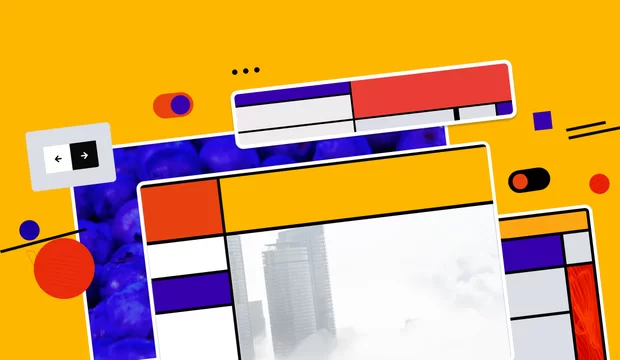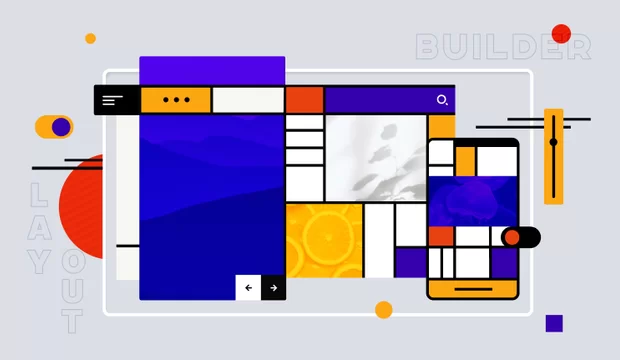Introduction
Web studios use their posts and service description pages to tell potential clients what programming languages, frameworks, libraries, databases, and CMSs they work with and what makes some technologies better than others. We are not an exception: our superpower is our Drupal, React, and Next.js knowledge. We’ve built it up for years based on our experience with hundreds of projects.
Although we are a studio developing websites with the Drupal CMS; in this post, we will tell you when your site doesn’t need a CMS. “Is this possible? How will the texts, images, and all that be loaded to the site?” Well, back in the old days, website developers used to do without CMS and still can do without it — this depends on the site and the tasks it has to solve.
How the web got started
Here is some history to start with. Websites and the web itself as a system of interconnected computers that store the data the site visitors need rest on three elephants: HTML, CSS, and JavaScript languages. All this appeared at approximately the same time. In 1989, Tim Berners-Lee, an IT technician who was working for the European Organization for Nuclear Research (CERN), offered a new concept of data publishing and access in the computer network: the World Wide Web. He did not stop here. Tim Berners-Lee became the Thomas Edison of his time because he invented the HTML language, web browser, HTTP, hyperlinks, and other solutions giving people new ways to live and communicate. 1991 saw the release of the HyperText Markup Language (HTML) specification and the first website.
Developers of the first websites opened their text editors and wrote web pages with the text, headers, and links to media files in HTML. Visually, the pages looked scanty, but after CSS language appeared in 1996, programmers could change the text color and type and move the content around. This process is similar to how newspapers, magazines, posters, etc. are compiled from different parts. JavaScript, in its turn, is not even the cherry on top of the cake, but the platform this cake is turning on. It added animation, movement, and interactivity to the sites and gave a full-fledged interface to the users.
When the front end is more important than the back end
Time went by. The Internet grew more complex and moved away from being the realm of scientists and the military, as it used to be at some point, to approach billions of users. This trend of public openness growing at the turn of the century and the involvement of the public in Internet development gave rise to CMSs and their popularization.
What is CMS? CMS stands for a content management system. For the administrators of today’s sites, the work with CMS is limited to content uploading, deleting, and editing functions, which can be mastered within a few hours. This is just like using a calculator instead of recollecting the algebra.
Examples of CMSs:
- WordPress;
- Drupal;
- Tilda;
- Joomla;
- OpenCart;
- Wix and many others.
Examples of websites built on CMS:
- Sony Music (WordPress);
- Alutech (Drupal);
- Marketika (Tilda);
- Vancouver Design Center (Joomla);
- Taunton Store (OpenCart);
- Dopple Press (Wix).
Everything on the web (or at least many things) is done for such people. So the site can’t exist without the visible part – you can call it the interface, front end, or whatever, as these notions are almost synonymous. Were it not for the front end, the users would be sending server requests through a console or terminal to receive a raw JSON file, which is not the most easily readable format in the world.
On the other hand, a site can do rather well without the backend and, consequently, without a CMS. The backend is a possible but not the only place from where the data can come to the client side. For example, the data can be represented by a JSON file stored on the server together with texts and links to images, videos, and other content. The content can simply be hardcoded, i.e. embedded into the program code itself. The end users, whose comfort is our priority, will see no difference at all while they are getting a good UI and UX.
Streamlined user experience must be a top priority for website owners. If an existing website doesn’t generate leads or the lead generation process shows poor results, then you might want to seek an answer in SEO and the front end of the website. For instance, ADCI Solutions specialists check the code style, do the UX audit, and conduct various front-end improvement works. Overall, this set of operations produces good results in terms of website performance which further impacts user experience.
Do I need a CMS?
Does your site need the backend and CMS as the admin’s tool? It depends on the site's purpose.
A couple of front-end developers who know HTML, CSS, and JS will be enough to create a landing or an online business card. Such sites have no complex processes at the level of client-server interaction — they are just not necessary if the purpose of the site is to describe the company, brand, product, service, or event. Basic development languages will also be sufficient to create temporary technical pages — maintenance page and status page — informing the users and clients that maintenance is in progress which is why the site or some of its functions may be unavailable. The content of such sites is rarely, if ever updated, so the sites are called static.
Dynamic sites, on the contrary, are rich in various interactive options and frequently send requests to the server for new content, which can include personal content for each user. These are e-commerce sites, online services, online media, browser graphic editors, and other complex products — which cannot be done without the server part.
Front-end developer’s tasks and the tools used to solve them
Both the front-end developer and the web developer must know HTML, CSS, and JS. However, a front-end developer needs the languages primarily to put things in order in the site interface, structure the content, and create various pretty things. A web developer, on the other hand, uses this and many other tools to create the site operation logic, set up the environment, and for client-server interaction. Though such requirements are less often set forth for the front-end developer, here the line is blurred.
The knowledge and skills front-end developers should have are listed below:
- HTML, CSS, and JavaScript;
- text (Brackets, Sublime Text, Notepad++, Espresso, etc.) and visual (Adobe Dreamweaver CC, RapidWeaver, etc.) editors;
- graphic editors (Adobe Photoshop, Figma, Sketch);
- ability to read design layouts and keep the graphic content in order (images, icons, etc.);
- knowledge of the React library;
- ability to work in template engines (Pug, JSX);
- pre- and post-processors (PostCSS);
- package managers (npm, Yarn);
- task runners (Grunt, Gulp);
- loaders and module bundlers (Browserify, Webpack);
- software used to test markup (CrossBrowserTesting, Markup Validator, IETester, Validator.w3, Dr Watson, CSS Validator);
- markup validation, i.e. check for compliance with W3C standards.
Conclusion
There are high chances that a developer who knows HTML and CSS will be sufficient for building a website without CMS if you need:
- a landing page;
- an online business card;
- a personal blog;
- pages with documentation (for example: Skype Support page);
- maintenance page (here is an article with examples in Atlassian’s blog);
- status page (here is another article with examples in Geekfare’s blog).
The lack of skilled specialists who could develop an online shop or CRM is not the reason for developing everything on HTML or CSS: look for a team with relevant projects in the portfolio or hire suitable specialists.




